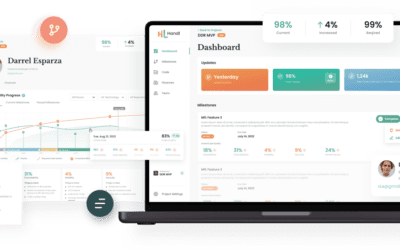Scenario: you have a great new app idea and you’re anxious to get it into the market and see how it performs. You build a quick minimum viable product (MVP) and launch, only to discover that it’s a flop.
What went wrong?!
As any custom app developer will tell you, the list of fatal flaws can be pretty big. But there’s a silver lining. For every potential pitfall, there’s a best practice to help prevent it from happening.
Today’s lesson is something like “MVP Failure 101.” Let’s look at some of the top reasons that MVPs meet their untimely demise and ways you can shore up these shortcomings as you develop your own software.
Lack of market fit
It’s a tale as old as time. The app creator can feel it deep in their bones that they’re creating a breakthrough that will catch on like wildfire. But when they launch, it’s crickets. This may be because your audience simply doesn’t see the same value as the creator did — maybe the app isn’t useful enough to take the time to integrate into their daily flow, or maybe it doesn’t solve their problem or need well enough.
Your best move: Take the time to do your market research before you start building. If you can, try speaking directly with your target audience through tactics like surveys, interviews, and focus groups. This can help pre-validate your market fit so you’re not blindsided after launch.
Too many or too few features
Building an MVP is a delicate dance: the whole point of creating it in the first place is to develop your concept just enough. You want to be sure that the core features are fully functional and that the product solves the user’s problem. But at the same time, you don’t want to over-develop features, as this can lead to a waste of time and money. Plus, you could find that those features were never needed in the first place.
Your best move: Lean into your market research and preliminary data to make informed choices about the core features needed. Resist the urge to over-develop and make it perfect on the first go.
One client added a feature to estimate property settlement times, thinking it would be helpful. But users weren’t interested. Settlement timelines are standard and well understood. The feature ended up wasting resources and distracting from more valuable core functions.
The code is too dirty
Building an app is an exciting thing, and there’s often a lot of pressure to get it launched as fast as possible so you can validate the idea in the market. But this sometimes results in quick-and-dirty code that’s too hard to work with later.
Unable to easily make updates to the flawed code, developers may need to invest in heavy code refactoring/restructuring. Worse, they may have to completely scratch the code and start from nothing. This is a huge drain on time and money.
Your best move: Take the time to build quality code the first time. Do a code analysis to iron out the kinks and create code that’s non-repetitive, testable, tightly commented, and well-named (just to name a few). It’s possible to get it done relatively quickly without sacrificing your end product.
Failed to meet user expectations
We’ve all felt the burn of trying out an over-hyped product that just doesn’t do what you thought it would do. Maybe this is because the app wasn’t executed well, with issues like clumsy or non-intuitive user experience (UX) or user interface (UI), poor performance like slow loading times or bugs, or a flat-out failure to do what they thought it would do.
Your best move: Set clear expectations of what your MVP can and can’t do. Be careful with your messaging, promotions, and communications — there’s a fine line between really good marketing and over-promising on features and benefits.
Didn’t use the agile method
There are 2 main approaches to project management: waterfall and agile. With the waterfall method, the development process is linear. The roadmap is planned comprehensively upfront, and the development cycle is one straight shot until every part is completely built out.
On the other hand, the agile method is more… well, agile. It breaks the development process into cycles, where one feature is built out at a time, then tested and refined before the next cycle begins. This way, you’re better able to address issues and new discoveries as they come up, instead of building the whole thing and realizing it doesn’t quite hit the mark.
Your best move: Try agile methodologies like Scrum, Kanban, Extreme Programming (XP), or Crystal. Keep a consistent, open line of communication with your team and the project’s stakeholders, and be ready to adapt to changing needs and requirements.
Poor post-launch strategy
It’s easy to get caught up in the excitement and commotion of getting the MVP into the hands of your users. But the job isn’t done on your initial launch. You’ll need a sound post-launch strategy so you can be sure that people know about your product, see the value in it, and actually incorporate it into their daily lives the way you intended.
Your best move: Don’t skimp on your marketing strategy. Focus on things like positioning your product well, choosing the right communication and distribution channels, and honing your audience research to reach them effectively. You should also be building strong relationships with early adopters, who can give critical insights and feedback, as well as give you a much-needed reputation boost.
Learn from failures past
We’ve all heard the sayings about how failure leads to growth. The great part is that you don’t even need to fail yourself — you can learn from other people’s failures too. Before you dive head-first into your MVP, look closely at your unique situation, goals, market landscape, and audience. Do as much research as possible, looking at existing data and collecting your own when possible.
When you take a step back and use a data-driven approach, you’re much more likely to avoid the mistakes of your predecessors. And of course, keep in mind that it’s not the end of the world if your MVP doesn’t skyrocket like you’d hoped. Testing it out is the whole point of an MVP, after all.




